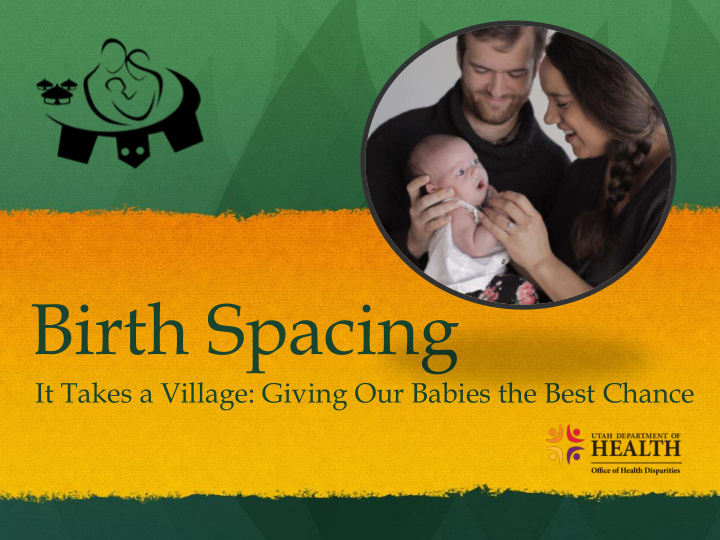



Birth Spacing It Takes a Village: Giving Our Babies the Best Chance
What is Birth Spacing? ● “The amount of time between the birth of one baby and the beginning of the next pregnancy.” 1
Did you know? ● 37% of Pacific Islander pregnancies are spaced 18 months apart or less. 2 ● 11% of Pacific Islander pregnancies are spaced 6 months apart or less (almost 3x higher than the rest of Utah). 2
Ancient or Modern? Science or Culture? ● Health professionals recommend that mothers wait 18 months after birth to allow their bodies to fully recuperate. 1 ● Our Pacific Islander culture and history actually teaches us that our ancestors already knew this was a good practice.
Birth Spacing is Cultural ● Samoan mothers waited “at least two years between the birth of each child .” 3 ● Hawaiian mothers stopped breastfeeding when their child was able to pick up and throw a stone, 18-20 months. 4 ● It was universal practice in the Pacific Islands for a husband and wife to abstain during the 1 – 2 years that a child was being nursed.
Birth Spacing is Cultural ● In the Pacific, the spacing of the planting time of crops in the fonua or fanua (land) was a common cultural practice, which allowed the fonua or fanua (land) to recover. 5 ● Birth spacing gives a mother the opportunity to recover and develop and strengthen her fonua or fanua (placenta, womb, and nurturing environment).
Birth Spacing is Cultural ● Birth spacing gives mothers the opportunity to invest quality time with their new baby. ● This develops and strengthens the kaliloa or ‘ aliloa or her influence on the child throughout the child’s life .
References 1. Maternal and Infant Health Program. Utah Department of Health. Retrieved April 27, 2017. https://mihp.utah.gov/after-pregnancy 2. Office of Health Disparities (2015). Health Status by Race and Ethnicity 2015. Salt Lake City, UT: Utah Department of Health. 3. Meleisea, M. (1987). Lagaga: A Short History of Western Samoa . (Malama Meleisea & Penelope Schoeffel Meleisea, Eds.). Apia, Western Samoa: University of the South Pacific. Retrieved from https://books.google.com/books?id=Gt_RrCAkctwC&pgis=1 4. Pukui, Mary Kawena. (2011). Hawaiian Beliefs and Customs During Birth, Infancy, and Childhood. Literary Licensing. 5. Lukere, V., Jolly, M. (2001). Birthing in the Pacific: Beyond Tradition and Modernity? Honolulu: University of Hawai’i Press.
Recommend
More recommend